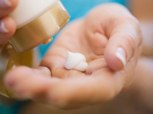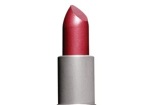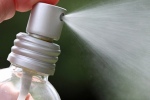On a typical day you probably shower in chlorinated water, put lotion on your skin, roll down the window to get some air on your way to work, eat lunch from the microwave and grab the receipt for your groceries on your way home.
Do you know that just today, you have been exposed to hundreds of chemicals called Xenoestrogens? Every one of these chemicals can be harmful, but when combined they are synergistically even more damaging.
What are Xenoestrogens? The meaning of the word Xeno is “foreign”. So, xenoestrogens are chemical compounds that imitate estrogen in the body. They are also referred to as “environmental hormones” or EDC – Endocrine Disrupting Compounds. They disrupt metabolism and the normal function of the endocrine system by competing for estrogen receptor sites. The body sees them as a hormone, and they can block the uptake of our body’s natural hormones. This may lead to an over abundance of estrogen in the body.
One of the main functions of estrogen is to encourage cell growth and activate the proteins that speed up cell division. Estrogens work with the immune system, reproductive system, bone growth and metabolism in both men and women. Xenoestrogens are stored in the body’s fat cells and they are not biodegradable. With too much estrogen in the body, the natural balance of hormones and trace minerals are thrown off decreasing immunity to fight of yeast, fungal or viral infections.
We are exposed to these chemicals every day in our lives. They are in the air, water, soil, new or dry cleaned clothing, body products, food and medicines like birth control and hormone replacement therapy. Xenoestrogens are in petrochemicals (like gasoline), insecticides, pesticides and electronics manufacturing. They are byproducts of bleaching paper and incinerating chlorinated products.
Again we are at the beginning of a new experiment on the human race as many of these chemicals have only been introduced within the last 70 years. Science is beginning to study the effects of xenoestrogens now, and unfortunately and many of the studies are only on one or two specific xenoestrogens, not how they work when combined.
With the sudden rise in obesity, infertility, early onset puberty, neurological development in all ages, diabetes, increases in ovarian, breast, testicular and prostate cancer it makes you wonder just how many chemicals our immune systems can handle.
With awareness of what to look out for, you can limit your exposure to Xenoestrogens by following a few of these tips.
Here are 40 ways you can avoid xenoestrogens and protect your health:
Makeup/Cosmetics/Body Care Products
- Avoid cosmetics and creams that contain parabens (ethylparaben, propylparaben, buylparaben and methylparaben), propyl gallate (an antioxidant used in beauty care products), phenoxyethanol, and stearalkonium chloride, these chemicals are estrogenic. While oral substances will be 80-90% absorbed by the body, those that are applied to the skin are absorbed at 100%. So a skin dose of these chemicals are equal to ten times the oral dose in the body.
- Avoid sunscreen that contains the xenoestrogen 4-Methylbenzylidene camphor, also known as 4-MBC or Benzophenone.
- Limit your exposure to nail polish and nail polish removing products.
- Beware of bubbles or foaming agents containing Sodium Lauryl Sulfate.
- Avoid antibacterial soaps containing Tricolsan (endocrine disrupting pesticide)
- Use chemical free toothpastes, soaps, hair care products, and deodorants.
- Use a good filter for the water in your shower, for your drinking water and or ice maker.
- Try essential oils or and naturally based fragrances in products.
Cleaning products
- Avoid using fabric softeners that allow petrochemicals to enter your body through your skin.
- Avoid using air fresheners and candles made with chemicals, as they may contain phthalates.
- Steer clear of anything containing Alkylphenol which is used in cleaning detergents.
- Use chlorine-free products and unbleached paper products such as coffee filters, paper towels, toilet paper, menstrual pads and tampons. Read more about the dangers of chlorine on our website here: Dangers of Chlorine.
- Choose biodegradable and chemical free laundry and household cleaning products.
Food
- Avoid all types of unfermented soy.
- Avoid eating foods with BHA (butylated hydroxanisole) This compound is a xenoestrogen and common food additive.
- Do not eat any GMO foods or products.
- Avoid the use of Roundup and other garden chemicals as they contain organophosphate pesticides which interfere with testosterone and are a neurotoxin.
- Check labels to avoid artificial food additives, including sweeteners and MSG. Take along our Grocery Watch List for a list of food additives to avoid. Click here to print your own copy: Grocery Watch List.
- Buying locally grown, organic food that is in season also reduces your exposure to pesticides, fungicides, and herbicides
- Choose organic, grass-fed, hormone free dairy products and range free meats. In non-organic meat and dairy, estrogenic compounds are used to make them weigh more or produce more.
- Peel the skin off of any non-organic vegetables and fruits.
- Eat as cleanly as possible and avoid animal fat if not hormone free.
- Try not to use food in cans, as over 85% contain BPA that is used to line the containers.
- Wash food well to remove pesticides.
- When growing your own food, use salt and vinegar to remove weeds instead of pesticides.
- Drink Milk Thistle Tea to support your liver.
- Remember to take your Fulvic Mineral Complex to help keep your trace minerals in balance and detoxify.
- Eat soluble fiber it will help to bind with toxins and reduce estrogen levels. Eating cruciferous vegetables like cabbage, cauliflower and broccoli help the liver to metabolize estrogens.
- Use a good water filter that removes Atrazine, which is a herbicide known to turn male frogs into female ones.
Plastics
- Avoid using plastic cling wrap.
- Avoid children’s toys and baby bottles made of plastic.
- Avoid Flame Retardants used in building materials, furniture, and clothing listed as Polybrominated biphenyl ether (PBDE’s)
- Avoid products with Phthalates and DEHP (plasticizers)
- Use glass to store your food and water in.
- Keep windows rolled up when commuting in heavy traffic or you may breathe in a higher amount of petrochemical residue.
- Do not use plastic bottles that have been frozen or heated.
- Do not use non-stick cookware or water-resistant coatings on clothes, carpets or furniture, as they may contain PFC’s or Perfluorinated Chemicals.
- If you must use a microwave, do not heat anything in plastic containers.
- Refuse receipts from stores as they contain xenoestrogenic chemicals.
Until we make a decision as a group to hold manufacturers more accountable for the chemicals that they are using in products, the best way to protect your self is with your daily individual choices for you and your family. One choice, one day at a time, can lessen the burden on your body of this modern chemical storm that we now live in.
Read more about Xenoestrogens in the following books:
Our Stolen Future by Theo Colburn, Diane Dumonski and John Peterson Myers
Healthy Living in a Toxic World by Cynthia Fincher, PhD.
The Hundred-Year Lie: How Food and Medicine are Destroying Your Health by Randall Fitzgerald
By Kathleen Threet, Staff Writer at Vital Earth Minerals






June 24, 2014 at 12:00 am
I’d like to thank you for the efforts you have put in writing this site.
I really hope to check out the same high-grade content by you in the future as well.
In fact, your creative writing abilities
has inspired me to get my own, personal site now 😉
July 20, 2014 at 6:38 pm
Hello, of course this paragraph is actually good and I have learned lot
of things from it about blogging. thanks.
July 25, 2014 at 12:16 pm
If you desire to improve your know-how simply keep visiting this website
and be updated with the most up-to-date news posted here.
July 28, 2014 at 7:53 am
Heya i am for the first time here. I came across this board and I find
It really useful & it helped me out much. I hope to give something back and help others like you helped me.
July 29, 2014 at 3:52 pm
Giving back is very important. Thanks for the positive feedback.
July 28, 2014 at 6:58 pm
Hola! I’ve been reading your weblog for some time now and finally got
the courage to go ahead and give you a shout out from Houston Texas!
Just wanted to mention keep up the great job!
July 29, 2014 at 3:51 pm
Hola! Hello Houston and happy to know you’re enjoying reading our blog!
July 29, 2014 at 1:17 am
I’m amazed, I must say. Rarely do I come across a blog that’s both educative
and amusing, and let me tell you, you’ve hit the nail on the head.
The problem is something too few men and women are speaking intelligently about.
I’m very happy that I came across this during my
hunt for something relating to this.
July 29, 2014 at 3:50 pm
Happy to have you visit and enjoy our posts!
July 29, 2014 at 11:37 pm
Thanks for finally writing about >40 Ways to Avoid Xenoestrogens – A Non-Stop Threat
to Your Health | vitalearthminerals <Liked it!
July 31, 2014 at 12:29 pm
You are welcome! Please share it with others!